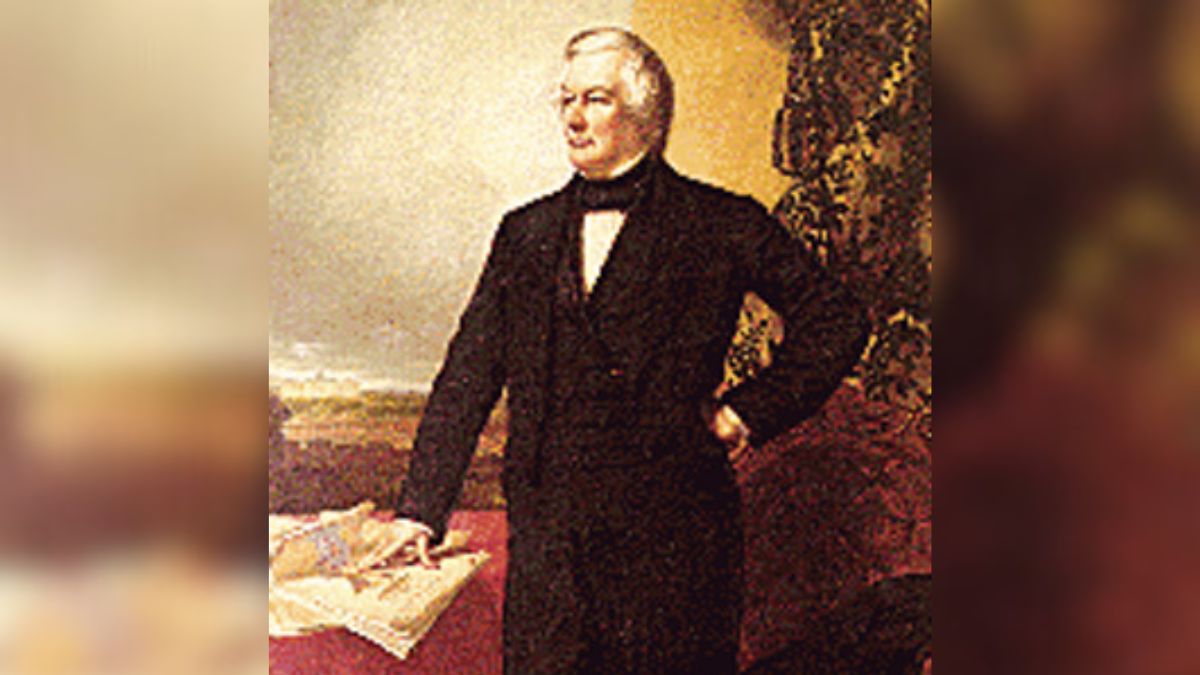Editor’s Note: This profile is part of a series taking a closer look at US presidents ahead of the 2024 presidential election between Donald Trump and Kamala Harris.
Millard Fillmore, the 13th president of the United States, is often remembered as a transitional figure in the turbulent years leading up to the American Civil War.
His presidency is most notable for the Compromise of 1850, which sought to ease tensions between free and slave states. Though Fillmore’s efforts temporarily averted conflict, his administration’s policies on slavery and sectionalism left a complicated legacy.
Fillmore’s rise in politics
Millard Fillmore was born on January 7, 1800, in a log cabin in Moravia, New York, to Nathaniel and Phoebe Fillmore. The second of nine children, Fillmore grew up in a poor farming family and had little formal education.
However, he was determined to rise above his humble beginnings, and through self-study, he became a teacher and later an apprentice to a lawyer. By 1823, Fillmore was admitted to the New York State Bar, and he began practising law in East Aurora, New York.
Fillmore entered politics in the late 1820s as a member of the Anti-Masonic Party, an early third party in American politics. In 1832, he was elected to the New York State Assembly, where he gained a reputation as a moderate and pragmatic legislator.
By the mid-1830s, Fillmore had aligned himself with the Whig Party, which opposed the policies of US President Andrew Jackson.
Fillmore in the spotlight
Fillmore was elected to the US House of Representatives in 1833, where he served for eight years. During his time in Congress, he became an advocate for economic modernisation, supporting tariffs to protect American industry and federal funding for infrastructure projects such as roads and canals.
He also played a significant role in the creation of the US Treasury Department, co-authoring legislation that established the department in 1841.
After leaving Congress, Fillmore served as New York’s comptroller, where he worked to reform the state’s financial system. His success in this role boosted his standing within the Whig Party, and in 1848, he was chosen as the vice-presidential candidate on a ticket with General Zachary Taylor.
The Compromise of 1850 and sectional tensions
Fillmore became president on July 9, 1850, following the death of US President Zachary Taylor, who had served just 16 months in office. As president, Fillmore inherited the nation’s growing divide over the issue of slavery, particularly in the newly acquired territories from the Mexican-American War.
One of Fillmore’s most consequential acts as president was his support for the Compromise of 1850, a package of five laws aimed at resolving the status of slavery in the territories.
The compromise included the admission of California as a free state, the establishment of territorial governments in New Mexico and Utah without restrictions on slavery, and the abolition of the slave trade in Washington DC.
It also included the controversial Fugitive Slave Act, which required that escaped enslaved people be returned to their owners, even if they had reached free states.
While the Compromise of 1850 temporarily calmed sectional tensions, the Fugitive Slave Act sparked widespread outrage in the North, where abolitionists viewed it as a betrayal of their values.
Fillmore’s enforcement of the law alienated many Northern Whigs, contributing to the eventual collapse of the party.
Fillmore opens relations with Japan
Fillmore’s presidency also saw several notable foreign policy initiatives. He opened relations with Japan, dispatching Commodore Matthew Perry on a mission to establish trade with the isolationist nation.
Perry’s mission ultimately resulted in the Treaty of Kanagawa in 1854, which marked the beginning of formal relations between the US and Japan.
Domestically, Fillmore supported internal improvements, including expanding the nation’s railroad system and improving harbours and waterways. He also presided over the admission of California as a state and the expansion of territories in the American West.
Post-presidency Fillmore
Fillmore’s decision to support the Compromise of 1850, particularly the Fugitive Slave Act, made him unpopular with many in the North, and he failed to secure the Whig Party’s nomination for the 1852 election. After leaving the presidency in 1853, Fillmore retired to Buffalo, New York.
In 1856, Fillmore returned to the national stage as the presidential candidate for the American Party, also known as the “Know-Nothing” Party, which was focused on nativist and anti-immigrant policies.
He finished third in the election, behind Democrat James Buchanan and Republican John C Frémont.
Fillmore largely retired from public life after his defeat in 1856. He continued to serve his community in Buffalo, engaging in charitable and educational activities, and was involved in the founding of the University at Buffalo.
Millard Fillmore’s legacy
Millard Fillmore’s presidency is often viewed as one of compromise and moderation during a period of increasing sectional tension.
His support for the Compromise of 1850, particularly the Fugitive Slave Act, has been criticised for enabling the expansion of slavery and deepening the divide between North and South.
While his foreign policy initiatives, such as opening relations with Japan, are seen as successful, Fillmore is generally regarded as a president who struggled to navigate the complex and divisive issues of his time.
He remains a somewhat overlooked figure in American history, often overshadowed by the more prominent leaders who followed him in the lead-up to the Civil War.
Fillmore died on March 8, 1874, at the age of 74.


)

)
)
)
)
)
)
)
)



